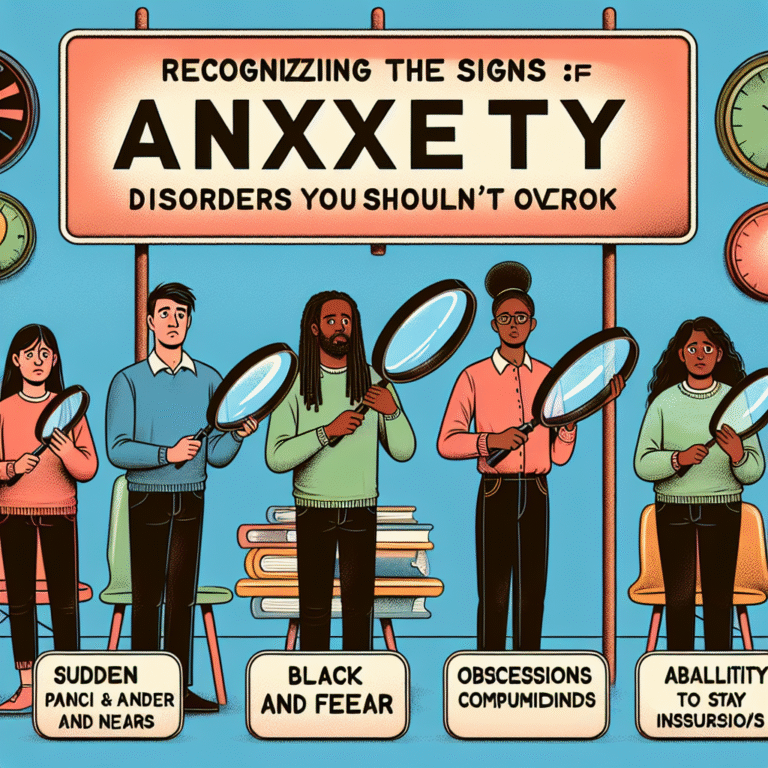
Mindfulness Made Easy: Simple Meditation Practices for Newcomers to Cultivate Calm
Introduction
In today’s fast-paced world, stress often feels like an unwelcome companion. With the relentless demands of work, family responsibilities, and the omnipresence of digital distractions, many newcomers have found themselves yearning for moments of peace and clear-mindedness. This is where Mindfulness Made Easy: Simple Meditation Practices for Newcomers steps in, offering an accessible pathway to serenity and self-awareness.
Whether you’re a busy professional, a parent juggling various roles, or a student feeling the weight of expectations, embracing mindfulness and meditation can transform your experience of daily life. But for those just starting out, the myriad of techniques and philosophies can feel overwhelming. This article breaks down Mindfulness Made Easy: Simple Meditation Practices for Newcomers into digestible practices that demystify the journey to mindfulness.
The Essence of Mindfulness and Meditation
What is Mindfulness?
Mindfulness is the practice of being fully present and engaged in the moment, without judgment. It encourages awareness of your thoughts, feelings, bodily sensations, and the environment around you. Unlike traditional meditation, mindfulness can be practiced anytime, anywhere. It’s about acknowledging your thoughts and feelings without letting them dictate your actions.
The Benefits of Mindfulness and Meditation
- Stress Reduction: Studies show that mindfulness can significantly reduce stress levels, helping newcomers to manage their responses to everyday challenges.
- Emotional Regulation: Regular meditation enhances emotional intelligence, allowing individuals to cope with difficult emotions more effectively.
- Improved Focus: Mindfulness practices sharpen concentration and enhance cognitive flexibility, essential skills in both personal and professional life.
Simple Meditation Practices to Get Started
1. Mindful Breathing
Overview: Mindful breathing is one of the simplest Mindfulness Made Easy: Simple Meditation Practices for Newcomers. It involves focusing on your breath to anchor yourself in the present moment.
How to Practice:
- Find a comfortable position, either sitting or lying down.
- Close your eyes gently.
- Take a deep breath in through your nose, gently filling your lungs. Pause for a moment.
- Exhale slowly through your mouth.
- Repeat this process, concentrating solely on the sensation of your breath entering and leaving your body.
Case Study:
A corporate executive, overwhelmed by deadlines, started a daily mindful breathing practice for five minutes before work. Within weeks, she reported improved focus and a decrease in anxiety levels, demonstrating how simple practices can yield significant changes.
2. Body Scan Meditation
Overview: This practice involves mentally scanning your body from head to toe, promoting a sense of relaxation and an enhanced mind-body connection.
How to Practice:
- Lie down in a comfortable position or sit in a chair.
- Close your eyes and take a few deep breaths.
- Start at the crown of your head. Notice any sensations, tension, or discomfort.
- Gradually move your attention down your body, pausing at each area to acknowledge how you feel.
- Once you reach your toes, take a moment to visualize your body enveloped in relaxation.
Case Study:
A high school teacher utilized body scan meditation after long days of work. By dedicating just ten minutes during her lunch break, she found increased patience with her students and reduced stress levels.
3. Guided Imagery
Overview: Guided imagery uses visualization to create a peaceful mental space, making it one of the more creative options in Mindfulness Made Easy: Simple Meditation Practices for Newcomers.
How to Practice:
- Find a quiet space and sit or lie down comfortably.
- Close your eyes and take a few deep breaths.
- Picture a serene place—beach, forest, or garden. Imagine the sights, sounds, and emotions associated with this environment.
- Spend a few minutes feeling centered in this peaceful place.
Case Study:
A mother struggling with postpartum anxiety found solace in guided imagery. By visualizing a calm beach, she was able to pause her overwhelming thoughts and cultivate a sense of calm, demonstrating its efficacy in real-world settings.
4. Walking Meditation
Overview: This practice combines mild exercise with mindfulness, offering newcomers an engaging way to ground themselves through movement.
How to Practice:
- Find a quiet place where you can walk back and forth or in a circle.
- Start walking slowly, feeling each step as your foot lifts off and touches the ground.
- Focus on the sensations of walking—the movement of your legs, the rhythm of your breath.
- If your mind wanders, gently bring your focus back to the act of walking.
Case Study:
An office worker began incorporating walking meditations during her lunch breaks. Over time, she reported feeling reinvigorated and found it easier to tackle challenging tasks post-meditation.
5. Loving-Kindness Meditation
Overview: This practice fosters compassion towards oneself and others, an essential aspect of mindfulness. It’s also known as Metta meditation.
How to Practice:
- Sit comfortably and close your eyes.
- Begin by cultivating kindness towards yourself. Repeat phrases like, “May I be happy. May I be healthy. May I be safe. May I be at ease.”
- Gradually extend these wishes to others—friends, family, and even those with whom you have conflict.
- Allow these feelings of love and kindness to fill your heart and mind.
Case Study:
A college student dealing with social anxiety found transformative power in loving-kindness meditation. By practicing it regularly, he reported increased confidence and more positive interactions, illustrating its potential for emotional healing.
Tools to Enhance Your Mindfulness Journey
Mobile Apps
Several apps are designed specifically with newcomers in mind, offering guided meditations and reminders. Some popular options include:
- Headspace: Known for its beginner-friendly approach and a variety of guided practices.
- Calm: Offers an array of meditation styles, sleep stories, and mindfulness techniques.
- Insight Timer: Features thousands of free meditations from different teachers worldwide.
Journaling
Combining meditation with journaling can amplify the benefits of mindfulness. Consider keeping a daily journal to reflect on your thoughts and feelings post-meditation. This practice can help reinforce insights gained during meditation sessions.
Community Groups
Engaging with a community can enhance your meditation practice. Look for local mindfulness or meditation groups. Many communities offer sessions that cater specifically to newcomers.
Overcoming Common Challenges in Mindfulness
Starting a mindfulness practice can come with its own set of challenges. Here are some common concerns and how to navigate them:
Challenge 1: Difficulty Concentrating
When starting, it’s common for the mind to wander. If you find this happening, gently redirect your focus back to your breath or your chosen anchor point. Remember, it’s a part of the process.
Challenge 2: Feeling Restless or Impatient
Newcomers often feel the urge to rush the process. Remind yourself that mindfulness is about the journey, not the destination. Allow yourself the grace to grow at your own pace.
Challenge 3: Lack of Time
Finding time for mindfulness can feel daunting. Incorporate short sessions into your daily routine—practice while commuting, cooking, or taking breaks. Remember, even a few minutes of mindfulness can make a significant impact.
Challenge 4: Skepticism about Results
Many newcomers may doubt the effectiveness of mindfulness. Approach it with an open mind and give it time. Documentation of your feelings before and after each session can help you acknowledge improvements in emotional well-being.
Challenge 5: Fear of Judgment
Practicing mindfulness may evoke feelings of vulnerability, especially in group settings. Focus on your personal growth, and remember that everyone in these spaces shares the same objective—self-improvement.
Conclusion
Mindfulness Made Easy: Simple Meditation Practices for Newcomers is a journey worth embarking on. By integrating these straightforward meditation techniques into your daily life, you can cultivate a sense of calm and presence. Remember, it’s not about perfection; it’s about progress. As you explore these practices, be gentle with yourself and celebrate each step you take towards greater mindfulness.
Embrace the quiet moments, acknowledge your thoughts, and allow yourself the joy of simply being present. The benefits await those willing to invest the time in their mental and emotional well-being.
FAQs
1. How long should I meditate each day as a newcomer to mindfulness?
It’s recommended to start with just 5-10 minutes a day. Gradually increase this time as it becomes more comfortable.
2. Do I need special equipment to meditate?
No special equipment is required! A quiet space and a comfortable position are all you need to practice mindfulness.
3. Can mindfulness help with anxiety?
Yes! Numerous studies show that regular mindfulness practice can significantly reduce symptoms of anxiety and stress.
4. How can I stay motivated to meditate regularly?
Set reminders in your calendar or download a meditation app that sends daily notifications to keep you accountable.
5. What if I can’t clear my mind during meditation?
It’s normal to have thoughts while meditating. Instead of fighting them, acknowledge them and gently bring your focus back to your breath or chosen anchor.
By embracing Mindfulness Made Easy: Simple Meditation Practices for Newcomers, you can discover a transformative tool for enhancing your mental well-being and navigating life with increased clarity and compassion. Give it a try, and watch how it enriches your life!










